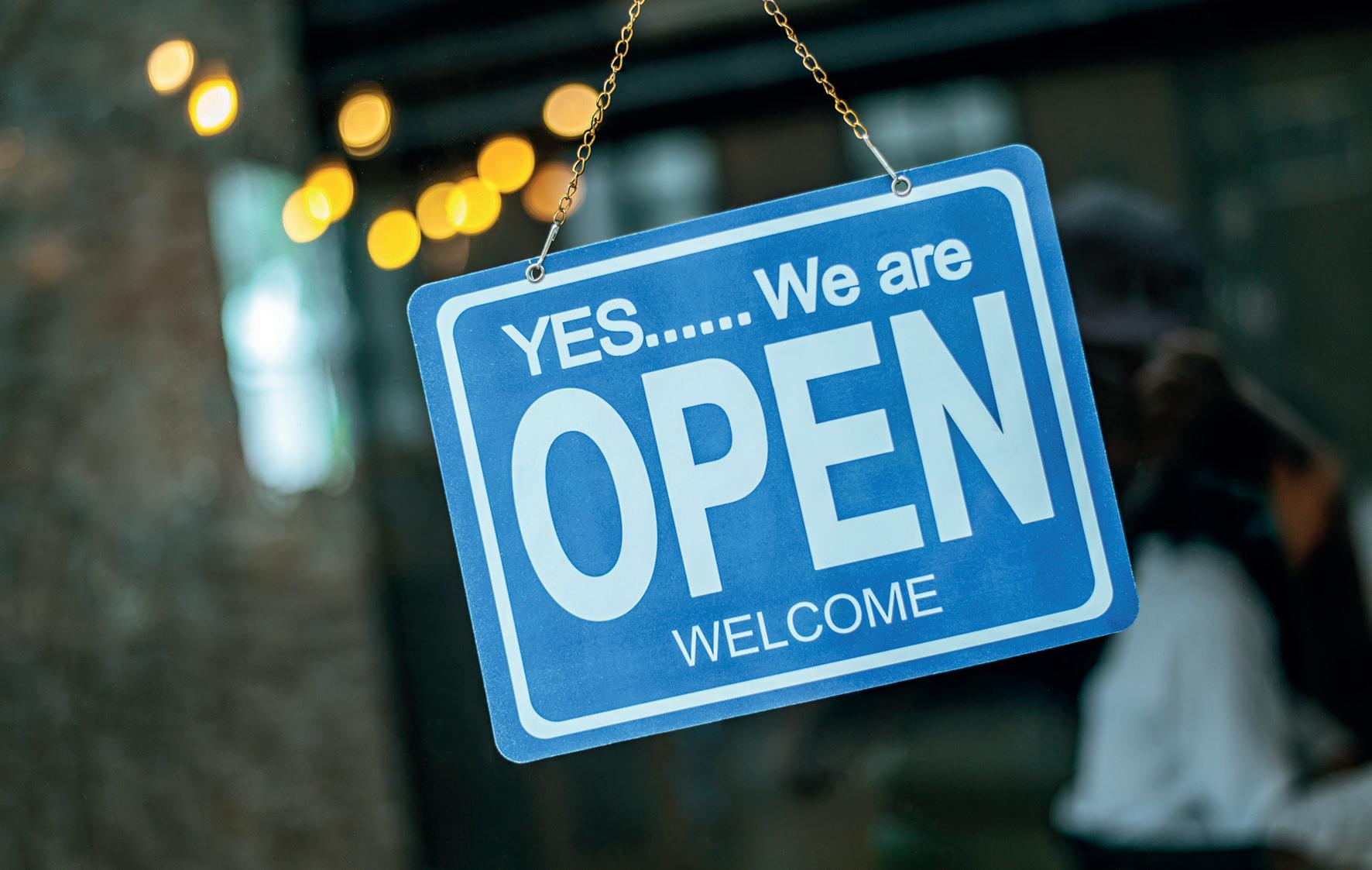
6 minute read
Bira
How are you doing?

CEO Andrew Goodacre from the British Independent Retailers Association shares the results of the association’s ‘reopening survey’ and says it’s further proof that businesses still need support to get back on their feet
CEO Andrew Goodacre

While the reopening of socalled ‘non-essential’ retail on April 12 was a step in the right direction, it is not the immediate happy end to the story.
Retail businesses have battled for more than a year, with many closed for at least eight months of the last 12, and their troubles have not simply ended with the lifting of the shutters.
Even businesses deemed ‘essential’, which were allowed to trade through the pandemic, are still faced with challenges such as a year of reduced footfall and lower consumer confi dence. I have said it, and will say it again, retailers of all kinds will need ongoing government support if our precious high street is to survive.
With this in mind, Bira organised a reopening survey to gauge how our members were doing; it was open to both those who had been shut and essential retailers who’d traded throughout.
Sixty per cent of those who fi lled in the survey said footfall had so far been lower than pre-pandemic rates in 2019; only about a quarter said footfall was higher than it had been. Nearly half reported that sales had been lower than preCovid – further proof if we needed any that businesses still need support to get back on their feet.
Rather optimistically, nearly half (43%) of our members said that they felt ‘reasonably confi dent’ that within two years business would return to ‘normal’, with 12% saying they felt ‘totally confi dent’.
However, despite this many admitted to having to drastic measures such as cutting day-today operational costs to maximise profi t, holding sales to clear out old stock, and buying less stock moving forward. One member said: ‘Initially, we had a good fi rst two weeks then fell to about two thirds of 2019 trade level. We hope for it to build up over time, but it will be serious for us if not.’
Another said: ‘Initial rush with people wanting to stock up in case we were locked down again. Since then though footfall is around 2530% lower than before.’
We will be passing all our fi ndings and members’ comments on to the Government, and will continue to lobby for a package of support to help businesses recover.
After all, while this is not the end of the story, I think we all want to see a happy ending.
See the full results of the Bira Reopening survey at: bira.co.uk/
resources/reopening_survey_ results_2021
If you would like to discuss any of this article with us, or would like to fi nd out more about our association and the support we give independent retail business, then please contact our membership team on 0800 028 0245 or visit bira.co.uk.

Is your business communicating effectively across the generations?

Chris Workman, PR and marketing manager for the Giftware Association, considers how you should best communicate with customers and sta of all ages and generations

Chris Workman

It is worth considering the profi le of your ‘ customers and considering if you might be using stereotypes in your marketing and communication with them ‘
In 2017 Generation Z entered the workplace. For the fi rst time there were fi ve generations side by side, both as customers and in the workplace. How does this infl uence the way you communicate with customers and manage sta e ectively?
Problems arise due to stereotyping and miscommunication, making sta harder to manage and potentially leading to confl ict. George Orwell said: ‘Each generation imagines itself more intelligent than the one before and wiser than the one after it.’ The rapid pace of change in so many areas of life can lead to friction and strife between generations and is perpetuated in media headlines.
The generational cohort theory suggests that people born within 15-20 year blocks do things in a similar way because they had similar experiences in adolescence. These divisions are stereotypes; people are all di erent and the fi elds are too long. However generational empathy and understanding how the way a generation grew up a ects their attitude can be helpful. In fact, the di erences between people’s values and preferences are actually very small; the perceived di erences are more stereotypes than reality. It is worth considering the profi le of your customers and sta , and considering if you might be using stereotypes in your marketing and communication with them.
The generations have more in common than di erences and a marketing strategy to appeal to a broad age range should build on common things. All generations value family most, look for appreciation and recognition, seek work life balance and are concerned about debt and savings.
In the workplace people value: ■ Respect ■ An opportunity to be heard ■ Trustworthy leaders who provide clarity and availability ■ Clear and careful communication, especially when concerning change ■ The opportunity to learn ■ Honest and supportive feedback ■ Meaningful work
Communication platforms cause the most problems with communication as the style used can cause barriers. Is the tone of emails too formal, refl ecting business letters, for example?
The use of punctuation, capital letters and exclamation marks should be carefully considered. Gen Z can be irritated by full stops as they signify an abrupt or angry tone of voice, so punctuation should only be used in longer communications.
Language is evolving on di erent platforms. Particular words can mean di erent things to di erent generations. Using the ‘thumbs up’ emoji has recently been declared to indicate you’re out of date. Abbreviations and ‘text speak’ developed to speed up texting on older mobile phones are no longer used as touch screens are now ubiquitous.
Considering and understanding the personal communication preferences of customers and in the workplace and how to fl ex them is particularly valuable in building relationships and avoiding misunderstanding. Consider the following: ■ Is the preferred method of communication by phone, text, email, face-to-face or other? ■ Tone, level of formality in greetings, sign o s, layout, punctuation ■ Message length. Should you use one stop detailed communication or more frequent concise messages? ■ Format, preferred font, spacing, use of bullet points? ■ Grammar rules on mobiles, abbreviations, text speak? ■ Expected response times? ■ Video, audio messages or voice mail? ■ Use of emojis’ - always, occasionally or never?
It’s a good idea to review your communication policies to identify current challenges. Consider if you’re using the most e cient channels for your audience and that the style, tone and format are appropriate. Consider if the length and frequency is optimal for your specifi c audience.










